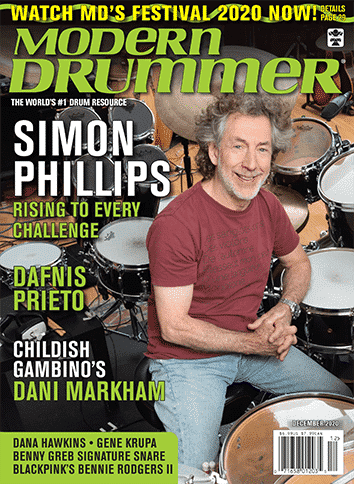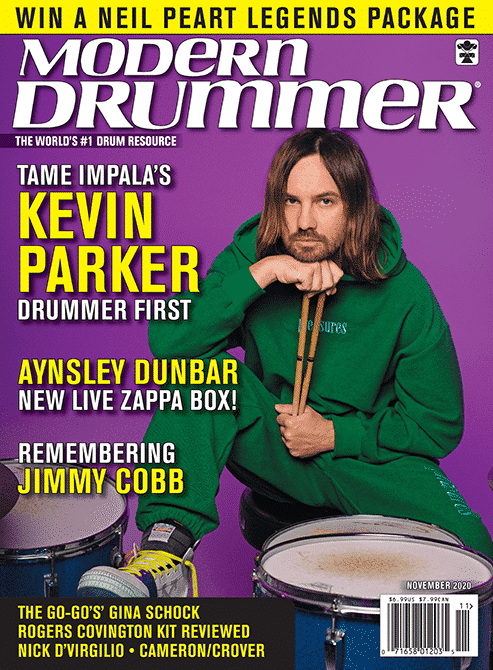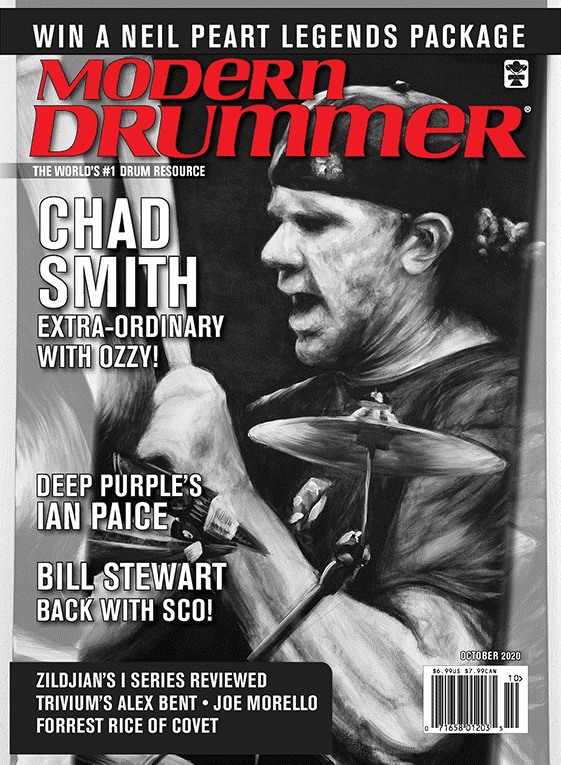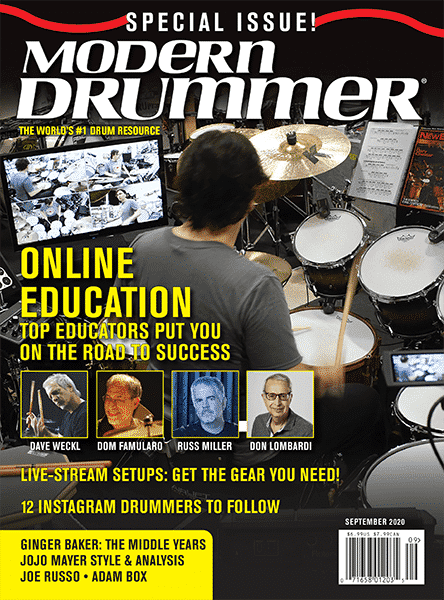Bill Bachman: Top 10 Rudiments Part 2: Double-Stroke Roll

Doubles are extremely useful, and not just in a roll context. Isolated double strokes can be played around the drumset to produce musical effects or to give you a little extra time to prepare for your next drum or cymbal hit. In addition to those obvious applications, being able to play a good-quality double-stroke roll will likely improve your drumming in ways you wouldn’t expect.
Define the Diddle
Proper double strokes (or “diddles”) aren’t simply bounced off the head. Nor are they played with two individual wrist strokes. At slow to medium tempos, doubles should be played as flowing free strokes (aka full or legato strokes) where the first stroke is played mainly with the wrist and the second is played mainly with the fingers (the “alley-oop” technique).
Think of the first stroke (with the wrist) as the setup and the second stroke (with the fingers) as the slam dunk. Immediately after playing the second stroke, the hand should relax so that the stick rebounds to the “up” position by itself. (Remember that with free strokes you never pick up the stick, you only throw it down—just like dribbling a ball.) It’s preferable to let the second stroke rebound up on its own because that proves that the second stroke was played with high velocity in a loose hand. Plus, there’s no sense in dampening the resonance of the stick on the second stroke by clamping it against the palm if it can be avoided. Advertisement
At medium-fast tempos and up, the second stroke will need to become a downstroke. In this tempo range there isn’t enough time for the fingers to open and allow the stick to float up after either stroke. Now the first stroke’s rebound pushes the fingers open, and then they react by grabbing the stick into the palm, which makes the second stroke a downstroke. (Pulling the stick into the palm accelerates the second stroke and adds the necessary velocity to match the first stroke’s volume.)
Almost all rudiments require different techniques for different tempos, and to play doubles at fast tempos you’ll have to change your technique yet again. Some amateur players push the limits of their double stroke–roll speed without adding forearms. The desired speed will never come this way, and the result is often muscle tightness, which can lead to injury as the wrists get overworked. Regardless of the tempo, the technique used for the first note of a double will be determined by what’s required to get the sound and dynamic level of the second note to match that of the first.
Here are my technical guidelines for playing double strokes at various tempos.
Slow: Play two free strokes using mostly wrist strokes.
Medium-Slow: Play the first stroke with mostly wrist and the second stroke with mostly fingers. Maintain the free stroke technique as much as possible on the second stroke of the diddle.
Medium-Fast: Play the first stroke with mostly wrist and the second stroke with mostly fingers. The second stroke will become a downstroke and the fingers accelerate the stroke during the process of catching the stick into the palm.
Fast: Play with forearms pumping (little or no wrist) and use mainly the first two fingers to play the second strokes. Make sure that you’re playing on top of the stick for better leverage and that the thumb is on the topside of the stick (American grip) so that it can push down into the drum. There should be no gap between the thumb and first finger since that would necessitate much greater squeezing tension. The forearm will lift the stick in preparation for the next double stroke so that the wrist doesn’t strain to do so.
Advertisement
Keep in mind that as you push your technical limits, it’s better to loosen up and play a bit weakly and bouncy than it is to stroke out the doubles. Be sure to avoid holding on to the sticks tightly and forcing out both strokes of the doubles.


This article is culled from Bill Bachman’s popular Stick Technique book, which is designed to help players develop hands that are loose, stress free, and ready to play anything that comes to mind. The book is for everyone who plays with sticks, regardless of whether you’re focusing primarily on drumset, orchestral percussion, or the rudimental style of drumming. Divided into three main sections – Technique, Top-Ten Rudiments, and Chops Builders – Stick Technique is designed to get you playing essential techniques correctly and as quickly as possible. Also includes a bonus section two-hand coordination and independence.






